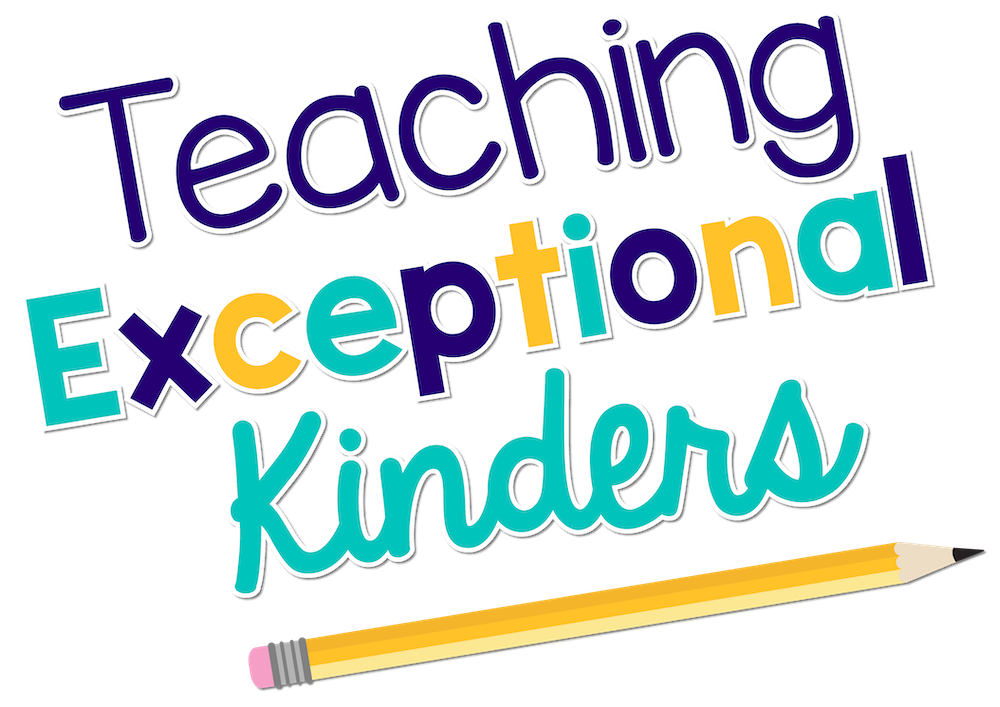Visual Supports for Defiant Behavior in the Classroom
We have all had students who seem to resist every direction they’re given during the school day. It can be challenging and frustrating to teach an entire group of students when you’re dealing with consistent defiant behavior in the classroom. In this post, I’m sharing how visual supports can be an effective strategy for dealing with defiance.
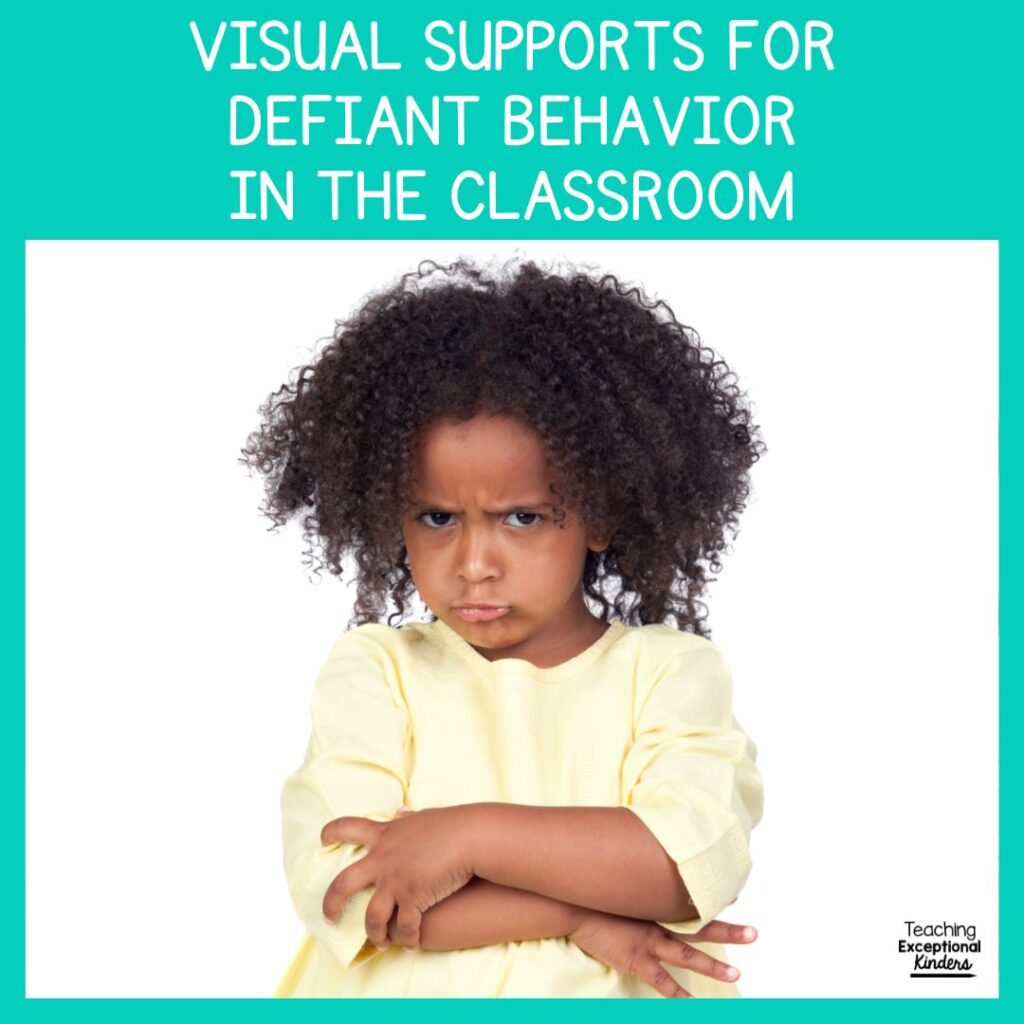
3 Reasons for Defiant Behavior in the Classroom
Before you can address defiant behavior, you need to get to the root cause. Students are individuals and they each have their own reasons for behaving the way they do. However, I have found that defiant students are generally non-compliant for one of three reasons:
- Control – Students who feel the need to be in control are often looking for a power struggle. They will refuse to follow directions given by someone else since it feels like they are giving up their control.
- Avoidance – Some students are defiant because they want to avoid the task. They might be trying to avoid a non-preferred task, something that’s too difficult, or something that’s boring to them because it’s too easy.
- Attention – It doesn’t take long for students to connect the dots that their refusal to comply with directions often results in one-on-one attention from the teacher.

How Visual Supports Can Help with Defiant Student Behavior
Using visual supports can be a very effective way to deal with defiance in your classroom, regardless of the root of the behavior.
Reduce Verbal Interactions
First, visual supports reduce the verbal back-and-forth with students who are looking for control and attention. You don’t need to get into a power struggle with them, offer alternative after alternative, or beg them to comply. The student has already made up their mind and no amount of discussion or rationalization is likely to change it. Instead, you can refer to the visual without bringing unnecessary attention to the student’s behavior.
Provide a Neutral Third Party
Visual supports also bring a neutral third party to the situation. Even as adults, we will often settle disagreements by looking up the facts online or asking a friend to weigh in on the conversation. A visual support can be this third party for you! In fact, the visuals often become “the enemy” when it’s time to move on to a non-preferred activity, so you don’t have to be!
Minimize Manipulation Attempts
Finally, students are more likely to view visual supports as “set in stone” and not easily manipulated. No matter how long they refuse to comply, the schedule is still the schedule. The pictures won’t be able to negotiate with the student. The “it is what it is” nature of visual supports can go a long way in dealing with defiance and noncompliance.
Effective Visual Supports for Defiant Behavior in the Classroom
With all of those benefits in mind, I’m going to share three of my favorite visual supports with you when it comes to supporting students who have trouble following directions.
1. Visual Behavior Prompt Cards
Prompting cards are a very helpful tool in the kindergarten classroom, particularly for students who refuse to listen to directions. These cards prevent you from adding unnecessary language to the situation. Instead, you can hold up the card with the direction you need the student to follow or place it on the desk in front of the student.
2. First/Then Boards
This visual support is very helpful for students who have trouble with transitions. Some students exercise their need to control when they are asked to switch to a less-preferred activity. Even if you give a heads up to the whole class or the individual student, it still might feel like the change is coming out of nowhere for that student. This sudden change can trigger the student to hold on to control of the situation through defiance.
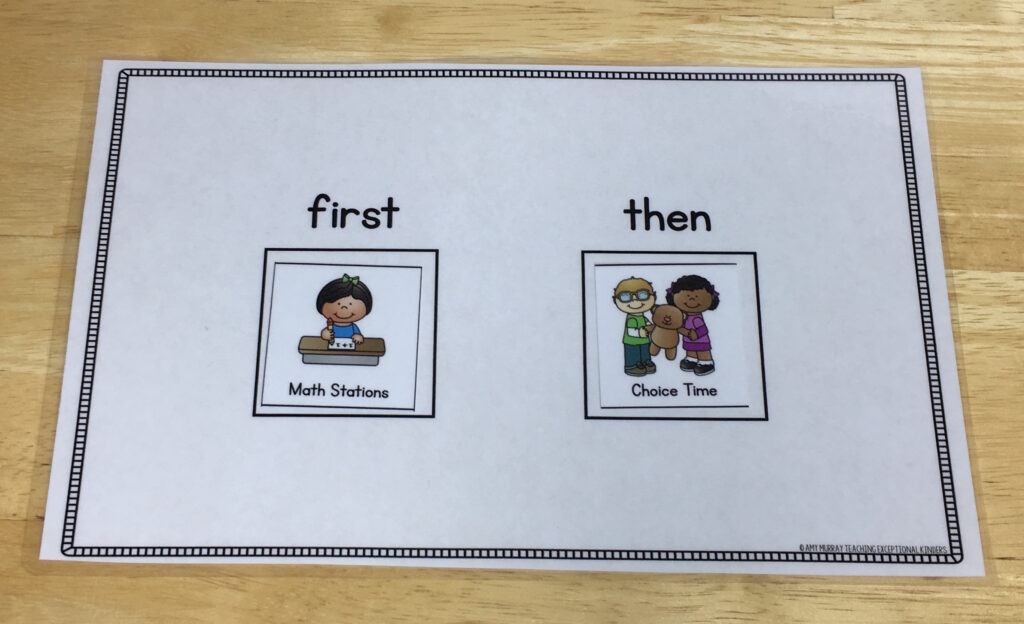
A visual first/then board allows the student to see what is coming next. When it’s time to transition to that activity, they will have the visual there to confirm what you are saying. The act of switching the cards on the visual can also help the student move on to the next activity, especially if they can see that a preferred task will be coming up.
3. Individual Picture Schedule
This visual support takes a little more prep time, but it is a very effective tool for students who need to see larger blocks of time. Some students need to see where all of their preferred and non-preferred activities fall within the day.
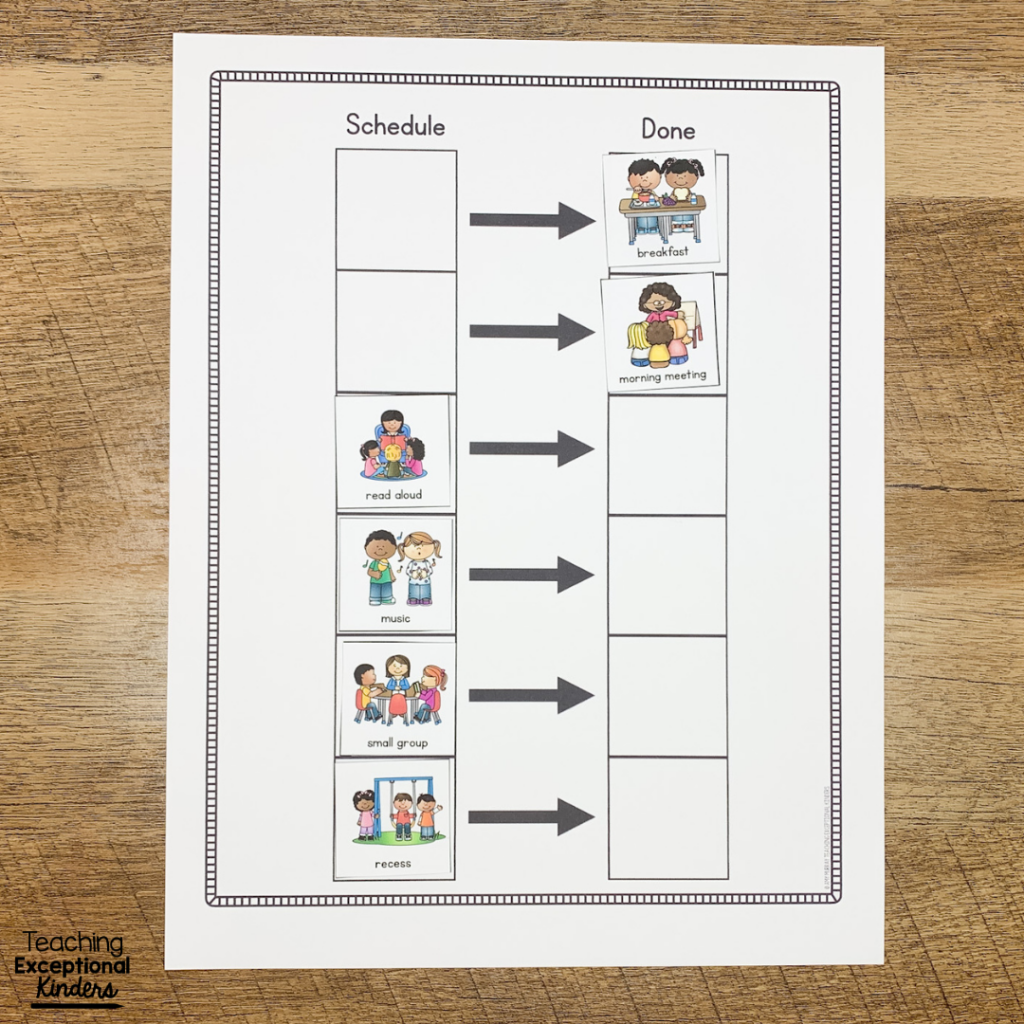
Ultimately, the individual picture schedule is “the boss” and dictates what the day looks like. This helps to avoid a power struggle since you are both referring to the schedule to see what’s next. To separate you even more from the individual picture schedule, you could also have an adult who has a strong rapport with the student review the schedule with them each morning.
Printable Visual Tools for Defiant Students
All of the visual supports that I mentioned above can be found in one easy-to-download resource. I have put together a set of visual schedule templates and cards, including first/then boards, that you can use to support your students who struggle to follow directions. This resource also includes 16 visual behavior prompt cards that you can use to minimize your verbal interactions with defiant students.
To take a closer look at everything included in this resource, just click below to find it in the Teaching Exceptional Kinders shop or on TPT.
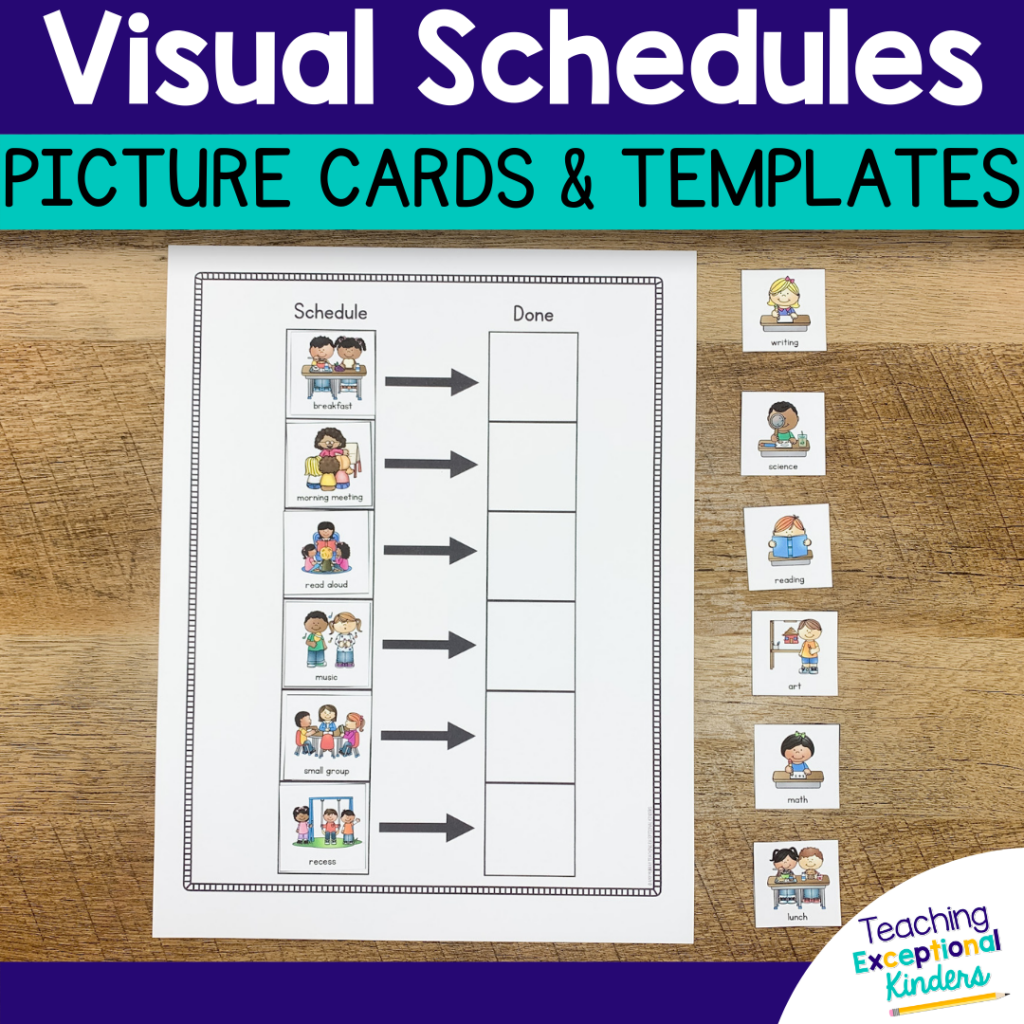
More Tips for Dealing with Defiant Students
If you’d like to continue the discussion about dealing with defiance in the classroom, check out this video where I share additional tips. You can also share your thoughts with me in the comments!
Save These Strategies for Defiant Behavior
Be sure to save this post if you’d like to come back to it later. Just add the pin below to your favorite teaching board on Pinterest. You’ll be able to quickly find these tips when you’re looking for strategies to deal with defiant behavior in the classroom.
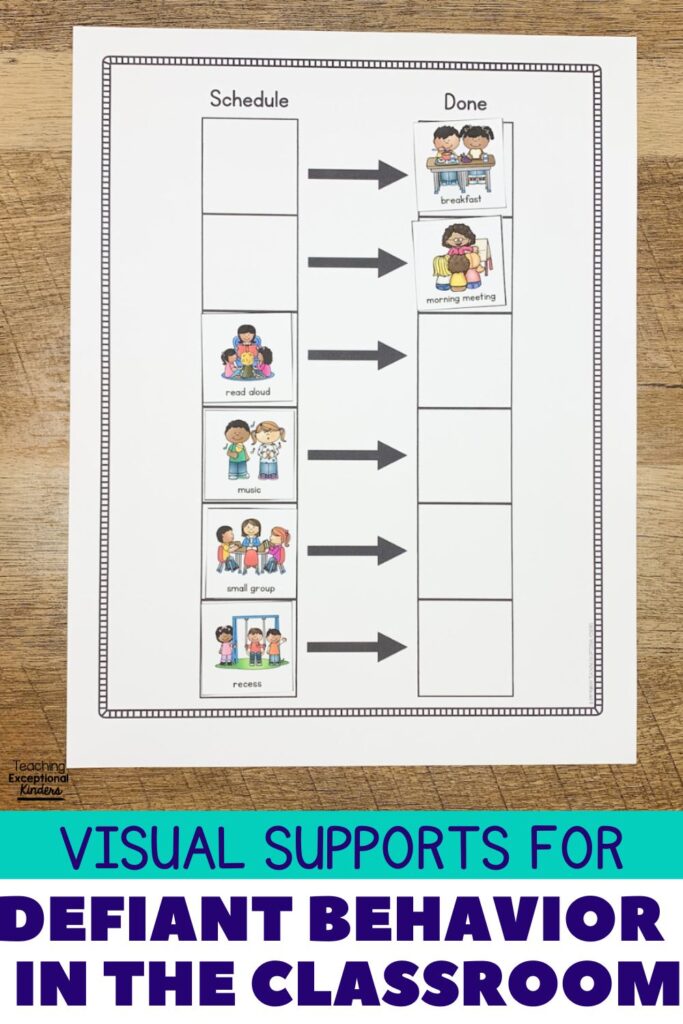
Amy
SITE DESIGN BY LAINE SUTHERLAND DESIGNS

